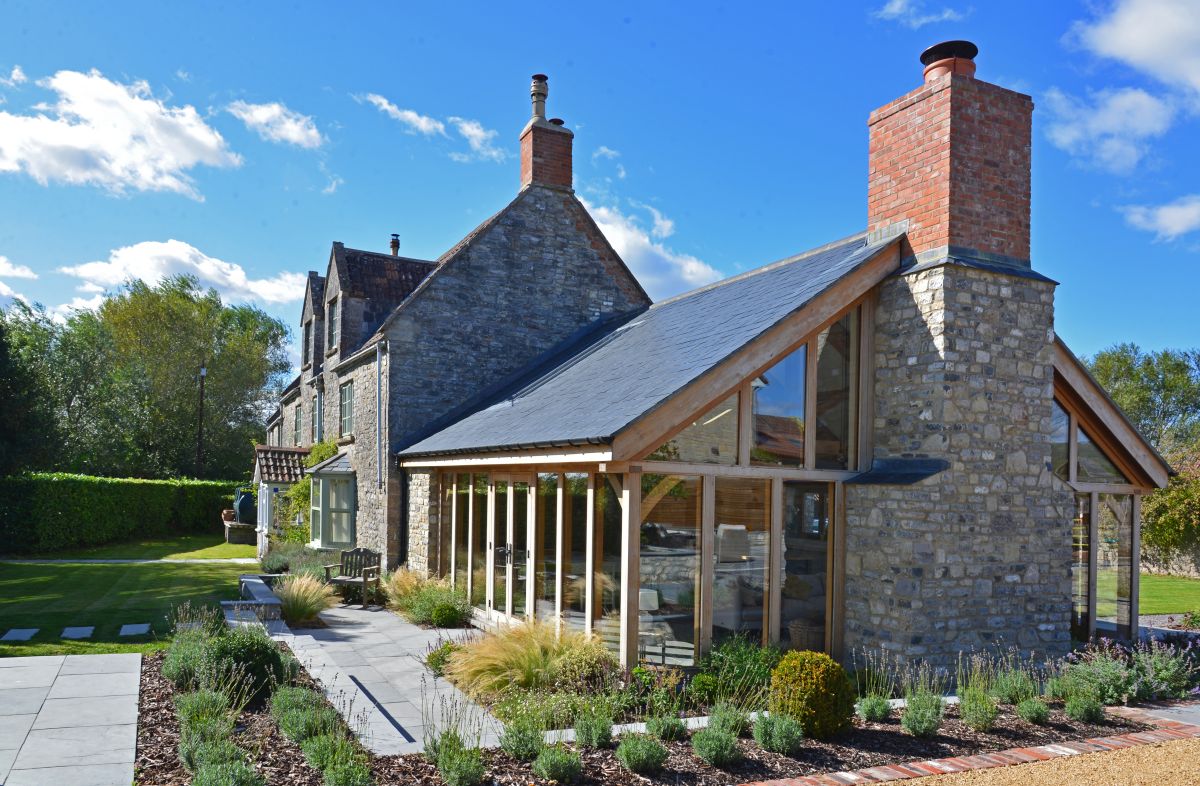
Written by Karen Bell at David Salisbury
There is something wonderfully evocative about timber framed buildings, particularly when crafted from rustic oak. A beautiful yet durable material, oak has been used in the construction of buildings for many hundreds of years (and goes even further back in the case of ship building).
As a sustainable material, oak framed buildings have become increasingly popular in recent years and no more so than in the design of oak framed orangeries and garden rooms. This style of extension has significantly advanced, to move away from the old 1980s analogy of a conservatory that is too hot in summer and too cold in winter, towards today’s modern structures that are built to luxurious standards for year-round enjoyment.
But not all oak orangeries and garden rooms are built the same – whilst design and functionality are obviously key, we’ll take a look into the most critical aspect of a long lasting, superior build: that is, the quality of the oak that is selected for manufacturing.
But isn’t all timber different anyway?
Yes and no! As a natural material, clearly no two pieces of wood are ever the same but what is important to note is that the selection of the type of oak used for manufacturing is critical and often differs from one supplier to the next.
What is Green Oak?
‘Green Oak’ tends to be recently felled and sawn and is sometimes referred to as ‘Wet Oak.’ In this green state, the oak will contain a very high percentage of moisture: typically 40% – 60% and sometimes higher. As it dries out over time, the loss of moisture can cause shrinkage, warping, twisting, fissures and shakes.
Relatively easy to machine, this is an ideal timber for the frame construction of a barn, garage or outbuilding where shrinkage and movement is not detrimental. Whilst all of these are completely natural, any shrinkage, warping or twisting of a glazed window frame is likely to be problematic and cause water ingress. Green Oak is therefore not recommended for us in manufacturing orangeries or garden rooms.
Why is Air Dried Oak better?
A premium quality manufacturer will use ‘Air Dried Oak’ as their preferred choice for a glazed extension, whether this is an orangery or garden room. The highest specification oak beams will be air dried for between 7 – 8 years before being machined. As oak dries at approximately 20mm per year, this gives a much more stable product.
When considering an oak framed manufacturer, it is worth checking any claims they might be making with regard to the oak they are using. Whilst long term air drying makes the timber more durable, it is also more expensive and will require quality machinery and tooling to handle it accordingly – so this higher specification material will be a hallmark of a quality manufacturer.
What should I choose for my extension project?
Green Oak is an entirely appropriate building material, when used in the right context. Air Dried Oak, however, is far more suitable for constructing orangeries and garden rooms.
There will be a discernible difference in price between these materials but if you are looking to extend your home with an oak framed extension, investing in the right timber – and the right manufacturer – is obviously key.
About the author
Karen Bell is Sales Director at David Salisbury, a company manufacturing and installing top of the range hardwood conservatories, garden rooms and orangeries for over 30 years